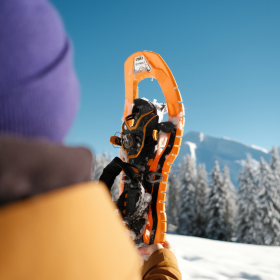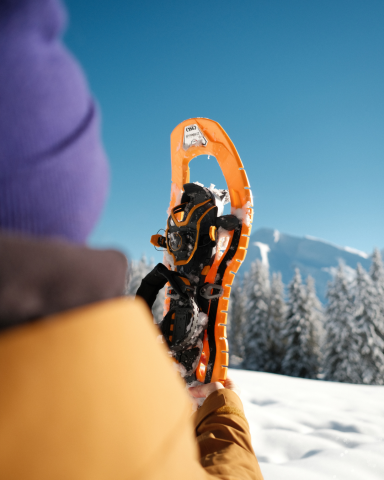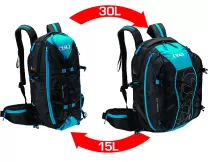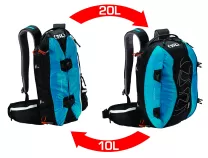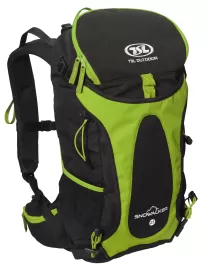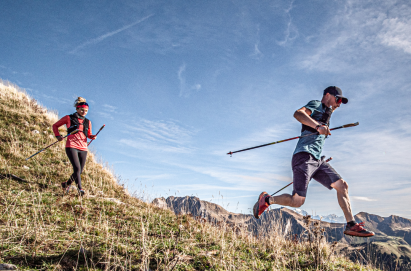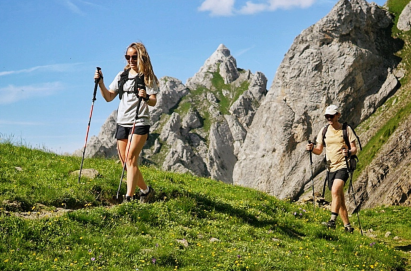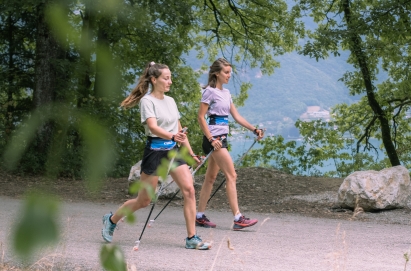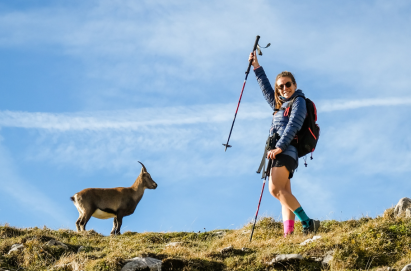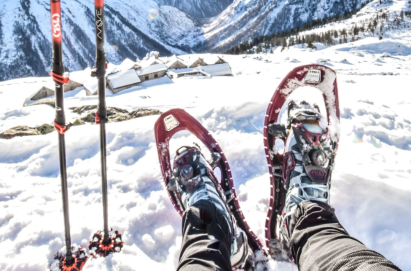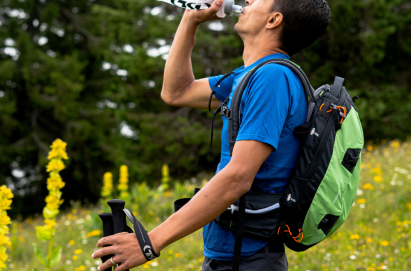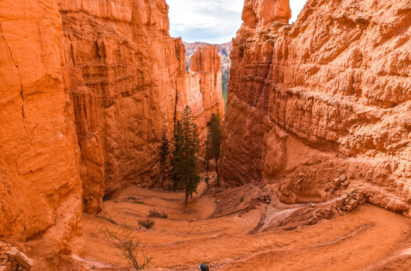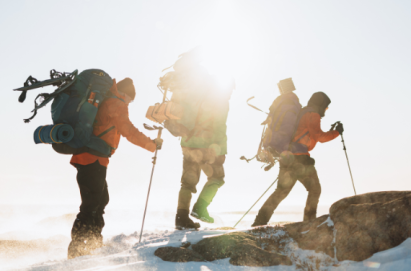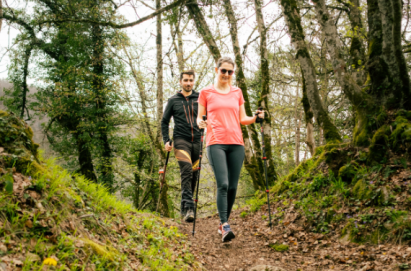BACKPACKING PACKS FOR OVERNIGHT
Backpacking Packs for Overnight: The Essential Gear for Your Next Adventure
When embarking on overnight backpacking trips, choosing the right backpack becomes essential. The pack you carry determines not only how much gear you can bring but also how comfortable you will be throughout your journey. Every element of the pack—size, weight, durability, and features—contributes to its overall performance and, in turn, your experience in the wild. A well-chosen pack can turn a difficult trek into an unforgettable adventure.
Finding the Right Size for Your Adventure
The first thing to consider when selecting a backpacking pack for overnight trips is size. For most overnight adventures, a pack volume between 40 and 70 liters is ideal. This range offers enough space to carry all the essentials while keeping the pack light enough to maintain comfort during long treks.
For those newer to backpacking or for trips that may require additional gear, 50 to 60 liters is typically a good starting point. This size allows room for your sleeping bag, sleeping pad, extra clothing layers, and food without being too cumbersome. If you're venturing into the mountains or colder environments where you'll need bulkier items like heavier sleeping bags or extra layers, the higher end of the volume range (65-70 liters) might be preferable.
A well-designed pack also provides a variety of storage options to make accessing your gear easy and efficient. Packs often feature main compartments, side pockets, and top lids, all working together to create a system where you can store items based on when you’ll need them. Being able to organize your gear efficiently is key to keeping your pack manageable during a hike.
Key Features for Maximum Comfort
Comfort is essential when it comes to backpacking, especially when you're out for an overnight or multi-day trip. A backpack designed for such excursions should distribute the load evenly, ensuring that the weight sits comfortably across your shoulders, hips, and back. This is where adjustable shoulder straps and a padded hip belt come into play.
An adjustable hip belt is critical because it helps transfer the bulk of the weight from your shoulders to your hips, reducing strain on your upper body. This is particularly important on overnight trips where you may be carrying heavier loads due to the need for more gear. Packs with good padding in the hip and shoulder areas, combined with torso length adjustments, offer a tailored fit, ensuring that your pack doesn't feel too long or short for your body.
Another feature to consider is ventilation. Many packs are designed with breathable materials and a mesh back panel to allow airflow between your back and the pack. This helps keep you cool and reduces sweat build-up during long hikes, improving overall comfort. Especially in warmer weather or on strenuous hikes, this feature can make a big difference.
Lightweight and Durable: Balancing Weight and Strength
When choosing a pack for overnight trips, balancing weight and durability is crucial. While you don't want a pack that adds unnecessary weight to your load, you also need one that’s durable enough to handle rough terrain and unpredictable conditions. The material should be lightweight yet strong enough to resist abrasions and withstand the elements.
Many backpackers are drawn to ultralight packs, which focus on reducing weight without sacrificing much in the way of strength or capacity. These packs are designed for those who prioritize speed and efficiency, often stripping down on extra features like additional pockets or heavier padding. However, it’s important to remember that while ultralight packs are great for cutting down on base weight, they can sometimes compromise comfort, particularly for those carrying heavier loads or those who are new to backpacking and may not have refined their packing strategy.
A pack’s durability is determined by the fabric and materials used. Ripstop nylon, for example, is a popular material due to its lightness and ability to resist tearing. When you’re miles from civilization, the last thing you want is a pack that tears under the strain of your gear.
Storage and Organization: Where Every Pocket Counts
For any backpacker, organization is essential. Overnight trips often require you to carry a variety of gear, from food and water to camping equipment and layers for unpredictable weather. A well-designed pack should offer a thoughtful layout of compartments and pockets, allowing you to keep essential items within easy reach.
Look for packs with large main compartments to store bulky items like sleeping bags and clothing. Many packs also come with side pockets or stretch mesh pockets, which are perfect for keeping water bottles, snacks, or maps accessible without needing to open the entire pack. Additionally, a top lid or brain compartment can be useful for storing smaller items like headlamps, sunglasses, or trail snacks, ensuring that you don’t need to dig through the pack to find them.
For those who like to keep gear organized, packs that feature internal compartments or dividers can be invaluable. Some models even come with dedicated compartments for sleeping bags, making packing and unpacking at camp more streamlined. It’s important to choose a pack that allows you to organize your gear in a way that suits your style and needs, ensuring that you’re never fumbling for critical items when you need them most.
How to Pack Efficiently for Your Trip
Once you’ve found the right pack, knowing how to pack efficiently is just as important. You’ll want to strike a balance between keeping your pack’s weight low and ensuring that you have everything you need for a successful overnight trip. Pack your heaviest items close to your back and near the center of the pack to maintain stability and reduce strain.
For example, your sleeping bag can often go at the bottom of the pack, while items like your food, water, and stove should sit closer to your back. If your pack has external pockets, these are great for items you’ll need to access frequently, like your rain jacket or map.
Keep in mind that every gram counts, especially on longer treks. Focus on bringing lightweight gear designed for overnight trips. Many experienced backpackers swear by multi-purpose items, such as sleeping pads that double as seats or using the same pot for cooking and eating. This minimizes the amount of gear you’ll need to carry while ensuring that you have all the essentials.
Considerations for Different Conditions
When planning your overnight trip, the environment and weather conditions you expect to face will heavily influence your pack selection. If you’re heading out on a winter trip, for example, you’ll need extra room for insulated clothing, and you may want a pack with reinforced waterproofing to protect your gear from snow and rain.
In contrast, for summer trips, ventilation and the weight of the pack become more important, as you won’t need as much clothing, but keeping cool is a priority. Many packs offer a rain cover or built-in weatherproofing to ensure that your gear stays dry, no matter the conditions. Compression straps are another helpful feature, allowing you to tighten the pack and reduce its size when you’re carrying less gear.
Choosing the Right Backpacking Pack for Your Adventure
When it comes to overnight trips, investing in high-quality backpacking packs is a game-changer. These packs are designed to carry all your essential backpacking gear comfortably over long distances, ensuring you remain well-equipped on the trail. Whether you’re a casual hiker, a seasoned adventurer, or an ultralight packer seeking the best backpacking solution, the right pack offers ample space and support for multiple days outdoors. Comfort is key, so look for well-padded straps and supportive frames that balance the load evenly. This way, you’ll minimize strain on your shoulders and back while maximizing enjoyment on any terrain. Above all, a great backpack keeps your belongings organized, so you can focus on the scenery rather than rummaging for gear. For additional help enhancing your trekking experience, browse our Trekking Poles Collection and discover the perfect companion to stabilize your stride.
Key Features to Consider in Backpacking Packs
Choosing a backpack that suits your body shape and hiking style can make all the difference during a long journey. Pay close attention to adjustable shoulder straps and torso lengths, ensuring your pack fits snugly against your back without shifting around. A supportive hipbelt—complete with hipbelt pockets—takes pressure off your shoulders by transferring the load to your hips, allowing you to hike longer with less fatigue. Look for organizational features like multiple compartments and side compression straps, so you can neatly store gear and prevent items from shifting during travel. Ventilation is also important; a pack with a breathable back panel helps keep you cool and reduces sweat buildup on hot days. Soft, padded straps add comfort, while smartly placed pockets make it easy to access snacks or maps on the go. With these considerations in mind, you’ll find a pack that optimizes both comfort and convenience. For even more options, explore our Men’s Trail Backpacks to suit your next adventure.
Lightweight vs Durable: What’s Best for Overnight Trips?
Choosing between ultralight gear and more robust, durable packs often hinges on your personal hiking style. Ultralight packs prioritize weight savings, making them ideal for hikers who cover long distances or have minimalist gear lists. They’re perfect for those who prefer efficiency and agility on the trail but might be less suitable when carrying heavy loads. Conversely, a more durable pack provides added support and resilience against rugged terrain, which is beneficial if you’re venturing off the beaten path or need to bring extra supplies. Balancing these factors is key: if you value speed and simplicity, ultralight may be the way to go; if you require toughness and versatility, a heavier design may serve you better. For women-specific fits, check out our Women’s Trail Backpacks.
Smart Storage: Maximize Every Pocket
When every ounce counts, you’ll want to keep essentials accessible and secure. A backpack with ample side pockets and water bottle pockets helps ensure you stay hydrated without constantly unpacking. Look for organizational features like zippered compartments and stash pockets that allow you to store snacks, electronics, and rain gear within easy reach. Sleeping pads can often be strapped to the exterior to free up internal space, while hydration packs fit neatly inside specialized sleeves for hands-free water access. Think about the gear you use most and arrange it so you can grab it quickly on the trail. Ready to expand your hydration options? Browse our Water Bottles Collection and find the perfect match for your setup.
Pack Essentials for Your Overnight Hike
A well-chosen pack isn’t the only key to a comfortable night under the stars. Make sure you’re prepared with sleeping bags or backpacking sleeping bags designed to keep you warm when temperatures drop. Water filters are crucial if your route includes natural water sources, reducing the weight of carrying large amounts of water. Don’t overlook small comforts like camp shoes for resting your feet after a long day, and pack a reliable rain jacket to stay dry in unpredictable weather. Lightweight camping chairs can also elevate your experience, providing a place to relax around the campfire. Remember that every item should fit comfortably within your pack’s compartments or external straps. To further enhance your hiking efficiency, check out our Hiking Poles Collection for extra balance and support on uneven trails.
How to Choose the Best Pack for Your Budget
Everyone loves finding the best budget backpacking options, and there’s no shortage of quality packs that won’t break the bank. When shopping, balance cost with the features you prioritize—whether that’s top-tier comfort, multiple compartments, or adjustable fit. Focus on your favorite packs in the mid-range segment if you need durability at a reasonable price. Be sure to read reviews, compare specs, and consider how often you plan to use the pack. Many budget backpacking models still offer robust support and comfort, proving you don’t have to compromise on essentials. As you finalize your choice, remember that TSL’s packs deliver excellent value. For even more wallet-friendly finds, explore our Good Deals Section.
Complete Your Setup: Tents, Filters & More
A backpacking pack is just the start of your adventure. You’ll need backpacking tents that offer reliable shelter from the elements and water filters to ensure safe drinking water on the trail. Travel backpacks and other backpacking equipment can help you stay organized if you’re mixing different travel styles, such as weekend getaways or extended journeys. It’s smart to think holistically about your entire setup: comfortable sleep systems, efficient cooking tools, and reliable navigation devices all contribute to a worry-free excursion. By assembling quality gear that works in harmony, you’ll be ready for virtually any situation the trail presents. To round out your outdoor essentials at a great price, be sure to browse our Good Deals Section.
Conclusion: Building the Perfect Overnight Setup
A backpacking pack isn’t just a piece of gear—it’s a tool that defines your comfort, efficiency, and mobility during your adventure. The right pack allows you to move freely, while carrying everything you need for an overnight journey into nature.
Discover our various activities
Complete your Outfit
Discover our latest news
-
Trekking
-
Trail
